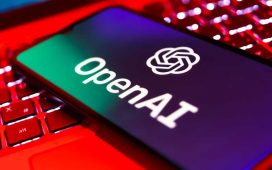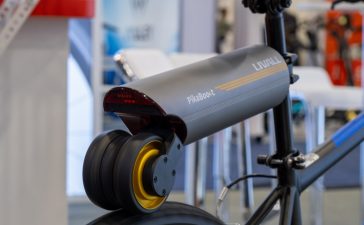With the competition just a click away, customer experience is everything. Consumers have unprecedented access to new digital services like never before. They are enjoying easier, faster, seamless, and personalized experiences. Looking forward, providers of these services must capitalize on embedded opportunities as the key to differentiating themselves and outcompeting in their markets.
Embedded opportunities are everywhere, across most, if not all, industries. In finance, embedded payments can make life easier for all parties with a single touch — removing the need to swipe, insert, or even tap a card. Customers automatically pay through an app at the end of their buying journey. Think of your ordering and pick-up experience through your favorite coffee shop app — a quick, accurate, and ultimately delightful start to your day, as you didn’t have to wait too long, of course.
Customers also expect the companies they do business with to understand their unique preferences and engage with them as individuals. Personalization within apps builds loyalty, increases client satisfaction, and creates growth opportunities. Consider when you log into your banking site, you’re presented with tailored offers specific to you and your needs. It could be a new loan, new credit card perks, offer of a consultation with a company representative, credit report, etc.
How about in the insurance industry? Consider the world of automobile insurance. It’s highly competitive with consumers looking for insurance coverage at least once a year, checking coverage, deductibles, prices, and other information that may tempt them to switch providers. Many companies only need the consumer to provide their name and ZIP code. With just those two pieces of information, an app can look up the full address, the cars that are registered to the individual, and the individual’s driving record — and instantly provide a quote. The faster and more compelling the quote, the faster the consumer can switch providers.
Hitting the right notes
Turning these opportunities into reality requires seamless alignment between the business and IT teams on the priorities and how to deliver for the end customer in a way that is nimble, fast, efficient, and successful. The days of a forced march to the Cloud are gone. Instead, organizations are leveraging a hybrid approach with both existing and new technologies together to build and support these new capabilities. This is how organizations succeed in providing the differentiated, compelling user experiences that ultimately grow the business.
The hybrid IT environment needs to function like a symphony, coordinating the contributions of various platforms to produce a beautiful composition or, in this case, to enable the delivery of differentiated and compelling experiences. The Mainframe — yes, the Mainframe — provides a competitive advantage as a key part of this symphony. There are three instruments you can use to help orchestrate this hybrid environment like a maestro: integration, artificial intelligence (AI), and automation.
Integration
To keep a hybrid IT environment synchronized, IT systems must provide sophisticated and well-orchestrated processes at scale — without fail. Yet more sophistication can lead to greater complexity and an increasing amount of data to manage.
IT experts often refer to the Mainframe as the heart of their business. After all, it ensures transactions are completed fast and data is always secured. On the other hand, IT leaders may leverage cloud services for front-end capabilities. It takes an IT maestro to conduct this multi-platform orchestra.
Since access to data is required to create the personal user experience, Cloud and Mainframe must work together. For example, to enable a rapid and easy automobile insurance quote, the application needs to have ready access to critical information, such as a database with names and ZIP code to APIs provided by the department of motor vehicles for car registration information and driving records, as well as to actuarial tables for similar cars and drivers. Only by integrating all this information in one flow can the estimate then be presented to the user. The user does not need to know how the pieces are accessed. They just know the application properly identified their information and they received the estimate quickly.
To enable the application to accomplish its mission, ensuring an accurate and fast result every time, an API-first strategy is a must. APIs allow the relevant databases to be mined and data integrated, while also enabling IT teams to monitor the application performance from end to end.
Artificial intelligence
The use of artificial intelligence is a differentiating factor for generating business outcomes. When the use case and desired outcomes are clearly defined, AI provides significant benefits. For example, business leaders leverage sentiment analysis to mine consumer reactions to the services and offerings they are providing. In a similar manner, IT leaders are capitalizing on machine learning anomaly detection capabilities to provide them with early warning of issues in the infrastructure or performance of an application.
For example, financial institutions are using sentiment analysis from social media outlets like Twitter and Facebook, as well as consumer feedback received via omni-channel support platforms. Sentiment analysis enables business leaders to assess the reaction of consumers and to pivot quickly where appropriate so they can consistently deliver a positive customer experience.
Increasingly, the teams supporting IT are transitioning from a reactive operating model to a proactive one and streams of performance data are now being pushed through machine learning algorithms. The goal is to identify anomalies and raise awareness that something out of the norm is happening in the environment. To obtain the most meaningful results, subject matter expert knowledge is applied to the outcomes via a set of rules or filters to eliminate the “noise” of excessive and low-priority alerts.
IT teams are focused on the applications that are most important to the business. Service Level Objectives (SLOs) are defined for each of the applications. The end-to-end application needs to complete before the timebox defined in the SLO is met to ensure the end user experience is delivered as intended. Applying advanced analytics and machine learning to historical data allows real-time anomalies to be detected and SLO misses to be accurately predicted — giving IT a chance to correct issues and avoid missing objectives.
Artificial intelligence cannot predict everything. No AI and no person could have predicted that the members of an online community, Reddit, would successfully orchestrate a short squeeze on GameStop stock via coordinated mass buys — leading to significant financial losses for the firms that had shorted the stock as they unwound their positions. However, having automation in place allowed companies to scale up instantly to handle the unexpected demand.
Automation
Automation is a powerful instrument. It can play a key role in keeping businesses informed. For example, by automating sentiment analysis and pushing the outcomes to business leaders, even the largest organization can keep its focus on the user experience — responding nimbly and quickly to changes in sentiment. In the IT shop, automating IT processes provides fast, consistent results for repetitive and complex tasks. Automation allows business and IT leaders to focus on higher priority work.
The power that automation delivers multiplies when used in combination with integration and AI to achieve the business objectives. In the insurance and finance worlds, IT teams are aggressively automating the necessary corrective actions in cases where advanced analytics and machine learning predict an SLO is about to be missed. This automated process happens thousands of times a day in large shops without requiring intervention from a human, ultimately ensuring the business delivers and the consumer receives the services they are seeking.
The encore
Looking ahead, increasing customer demands will continue to drive new changes to business operations. How you orchestrate your business and IT stack will determine if your organization can keep up with evolving customer expectations. Your customers are yours to win over — time and time again. Loyalty cannot be assumed; it must be nurtured and cultivated.
The truth is that when one part of a process or system is out of sync, the customer is impacted. When an instrument plays out of tune, it can ruin your experience of even the most promising symphony. It’s the same dynamic for front-end experiences and back-end systems. Orchestrating data and processes across Mainframe and Cloud through integration, AI, and automation are vital to provide the best experience, and get it right time and time again. Together, they add value to your customers and, ultimately, to your business.
Begin differentiating and improving customer experiences by integrating the Mainframe and Cloud today.
Copyright © 2023 IDG Communications, Inc.












